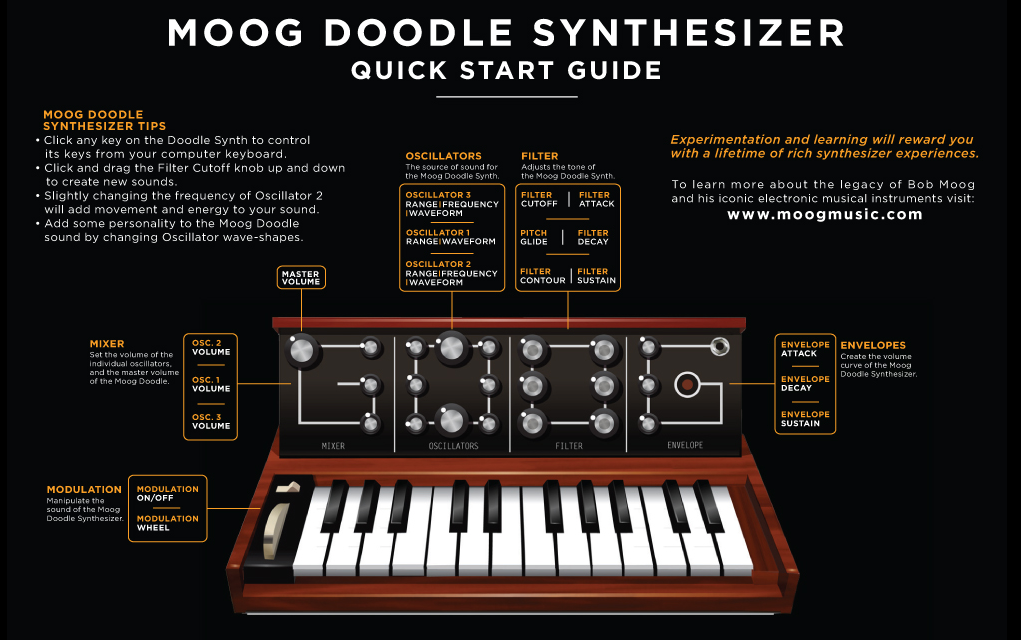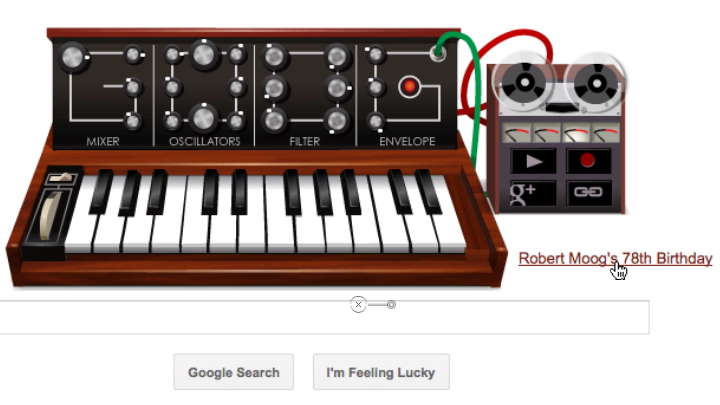To celebrate and commemorate the 78th birthday of electronic music pioneer and inventor Robert Moog (May 23 2012), Google has created one of its most amazing “doodles” yet: a full-blown, live-playable emulation of a Moog 3-oscillator analog synthesizer, embedded on the Google home page.
Permalink: Google’s Moog Doodle (play it online)
Think this couldn’t possibly be a serious piece of music tech? Check out the downloadable quick-start manual for the Moog Doodle, available from Moog Music’s site (click the image below to get the PDF):
As you can see, this Moog synth emulation provides 3 oscillators, with control over waveform as well as tuning for each oscillator; a full-featured low-pass filter with a simple dedicated envelope; and a sweet pitch-glide control to give you those distinctive 70s swooping effects.
The Moog Doodle is playable on Google’s home page, using your mouse or your computer’s keyboard (the qwerty row is mapped to the “white keys”, and the number row covers the “black keys”). You can even record what you play, using the simulated 4-track reel-to-reel tape deck.




 Royer
Royer